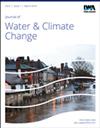水质预测:利用先进的机器学习算法和数据增强技术的数据驱动方法
IF 3.1
4区 环境科学与生态学
Q2 WATER RESOURCES
引用次数: 0
摘要
水质评估在人类健康、环境影响、农业生产力和工业流程等各个方面都发挥着至关重要的作用。机器学习(ML)算法能够自动进行水质评价,并能有效、快速地评估与水质相关的参数。本文提出了一种基于 ML 的水质预测分类模型。该模型使用 14 种 ML 算法进行了测试,并考虑了代表水样中各种物质及其浓度的 20 个特征。研究中使用的数据集包括 7,996 个样本,模型开发涉及多个阶段,包括数据预处理、用于数据归一化的 Yeo-Johnson 转换、用于特征选择的主成分分析 (PCA),以及用于解决类不平衡问题的合成少数过度采样技术 (SMOTE)。每种算法在有 SMOTE 和没有 SMOTE 的情况下,都有准确度、精确度、召回率和 F1 分数等性能指标。LightGBM、XGBoost、CatBoost 和随机森林被认为是性能最好的算法。在没有 SMOTE 的情况下,LightGBM 的准确率最高,达到 96.25%,而 XGBoost 的精度最高,达到 0.933。SMOTE 的应用提高了 CatBoost 的性能。这些发现为基于 ML 的水质评估提供了宝贵的见解,有助于研究人员和专业人员进行决策和管理。本文章由计算机程序翻译,如有差异,请以英文原文为准。
Water quality prediction: A data-driven approach exploiting advanced machine learning algorithms with data augmentation
Water quality assessment plays a crucial role in various aspects, including human health, environmental impact, agricultural productivity, and industrial processes. Machine learning (ML) algorithms offer the ability to automate water quality evaluation and allow for effective and rapid assessment of parameters associated with water quality. This article proposes an ML-based classification model for water quality prediction. The model was tested with 14 ML algorithms and considers 20 features that represent various substances present in water samples and their concentrations. The dataset used in the study comprises 7,996 samples, and the model development involves several stages, including data preprocessing, Yeo–Johnson transformation for data normalization, principal component analysis (PCA) for feature selection, and the application of the synthetic minority over-sampling technique (SMOTE) to address class imbalance. Performance metrics, such as accuracy, precision, recall, and F1 score, are provided for each algorithm with and without SMOTE. LightGBM, XGBoost, CatBoost, and Random Forest were identified as the best-performing algorithms. LightGBM achieved the highest accuracy of 96.25% without SMOTE, while XGBoost attained the highest precision of 0.933. The application of SMOTE enhanced the performance of CatBoost. These findings provide valuable insights for ML-based water quality assessment, aiding researchers and professionals in decision-making and management.
求助全文
通过发布文献求助,成功后即可免费获取论文全文。
去求助
来源期刊

Journal of Water and Climate Change
WATER RESOURCES-
CiteScore
4.80
自引率
10.70%
发文量
168
审稿时长
>12 weeks
期刊介绍:
Journal of Water and Climate Change publishes refereed research and practitioner papers on all aspects of water science, technology, management and innovation in response to climate change, with emphasis on reduction of energy usage.
 求助内容:
求助内容: 应助结果提醒方式:
应助结果提醒方式:


